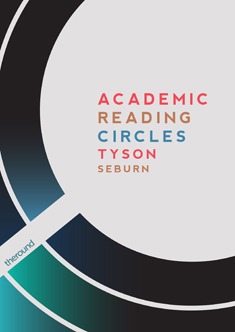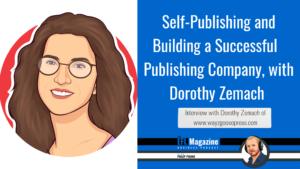Publishing With The Round
In this post, I discuss my experiences of publishing an ELT book through alternative methods and address the questions I asked myself during the process.
The Why
Writing and ultimately publishing a book has always been on my ELT bucket list, from the time I was a wee youngster teaching in Seoul in the late 90s. There has always been that draw towards language teaching books of any sort: the feeling of it in my hands and the excitement of perusing the bookstore for new titles.
I’d be lying if I said the altruistic reasons of sharing resources with colleagues around the world were my sole motivation. If I am honest with myself, the perceived gravitas in our profession entrenched in doing so contributed as much as anything. Rightly or wrongly, the names of speakers whose living wage includes speaking engagements throughout the world most frequently also appear on well-known titles. While sharing work, collaborating on projects, and engaging in discussion about language teaching issues means a lot to me, I felt that putting together a cohesive text about a topic I am passionate about would help me reach a wider audience and foster more opportunity to do these things.
The When
During my graduate studies at the University of Manchester, the existing discussion in my area of interest—L2 reading—became acutely present to me. It became obvious through this reading, however, that neither broad methodology, nor coursebooks, appealed as topics to me to write about. Furthermore, nearly anyone who has written graduate papers questions their ability to write a cohesive text; I was not immune. I also wondered if specific activities I developed and used with classes felt too niche for traditional publication. As a result, I opened my blog 4CinELT (fourc.ca) as a way to both share resources and refine my written voice. Little did I realise at the time that a few initial posts about an intensive reading activity I was doing with my EAP learners at the University of Toronto would transform into my eventual publication: Academic Reading Circles.
The Whom
In November 2012 at the TESOL France Colloquium in Paris, I started to recognise that my publishing endeavour might not be thwarted by the limitations of the print industry: page length, format, intellectual property rights, and mass audience appeal. Not too long before, I had read about the founding of Luke Meddings and Lindsay Clandfield’s niche publishing house, mostly as a result of buying their first title, 52. Little by little, more titles appeared in the works (i.e. “the labs”), all of which rested within “the gap between blogs and books” and were “innovative, nice or critical materials”. So through some encouragement, at the TESOL France Colloquium where Luke Meddings was a plenary I decided an opportunity to connect in person with him about my little intensive reading activity within an EAP context was most practical.
We met briefly. We discussed my idea. We talked about the limitless possibilities of format, length, and content. We liked where this might go despite its very early conception. I was optimistic. Through this brief encounter, The Round’s uniqueness appeared above simply the fact that their titles were electronic (or that they unconventionally use lower case to describe themselves; henceforth in this article, I’ll adopt their usage: the round). Over the course of the next two years, the round’s principles played out in practice.
The round aims to be “a learning environment (where we share expertise and ideas)”. I submitted a proposed outline and sample chapter for their review. I’ve since realised that its community of writers are involved here for diverse feedback and suggestions on improving the proposed content work for the round. This principle also played out while I was writing through feedback on content, help with formatting for electronic publishing, and walk-throughs during the process of final publication on Smashwords and Amazon, two of the predominant platforms for self-publishing online. I also got periodic gentle pushes for updates on my progress, which both encouraged me and made me more accountable, regardless of deadline. Everyone I interacted with at the round is a teacher with multiple hats, so they understood that sometimes I wasn’t able (or willing) to focus on writing because of other responsibilities.
The round also provides “a fair deal to authors (who sell and retain the copyright on their own work)”. If you create anything, you always want it to be yours to do with what you like. Despite publishing through the round, authors continue to own their own work. This is an amazing plus, which means that should I wish to repurpose the book elsewhere, I retain that ability without requiring complete rewrites. Not having to reinvent the wheel in order to share your creations in different ways with different people? What a humane concept! Additionally, everyone is an author themselves with varying experiences in the publishing industry, so fair becomes the modus operandi.
Finally, with little overhead, the round is able to support smaller writing projects, topics that appeal only to a smaller audience (after all, mine is aimed at EAP teachers, specifically those that focus on reading skills, and particularly intensive reading skills), ideas from newbie authors (like me), and all offered at lower prices than the typical ELT book in print.
The How
Throughout this process, I’ve learned a great deal, which I’ll utilise the next time around.
- Planning things concretely, not just conceptualising, is absolutely required.
It significantly helps the process flow smoothly and improves your ability to articulate your idea to others if you have planned out on paper what you want to go in your book (note the irony). What is the purpose of your book? Who specifically benefits from it the most? How does one chapter lead into another logically? - I didn’t know ‘better’ until I heard what ‘better’ exists.
In other words, I couldn’t be precious. Your work is your baby. It can be challenging to hand it over to others for critique, no matter how helpful. I learned that it didn’t do my book justice to hold it tightly just to myself and feel defensive about the way I wanted it to be. Several pairs of eyes see things you certainly don’t, especially if two pairs belong to a trained editor and experienced author. It was fascinating to see comments on issues of clarity, unnecessary complexity, and even spelling and punctuation inconsistencies I hadn’t noticed in my gazillion rereads. I remember being asked whether I wanted to use American, Canadian, or British English early on. I hadn’t thought about it before. Why would this matter? Let’s just use my own preferences. Surely any teacher would overlook this from other regions. It became quickly clear that not everyone would appreciate my quirky spelling choices. Additionally, feedback on the layout of your chapters is essential. What makes sense to you initially may ultimately seem incredibly illogical after someone points out a better way. - There can be unexpected potential costs in this process.
Call me naïve, but it didn’t occur to me that designing the cover of my book, nor said professional editor, would be out-of-pocket expenses. I suppose I figured that the publishing company would take care of that, but in the round’s case, since authors retain control of their content and titles are cheap, that doesn’t make sense. If you self-publish, some of these costs may go down, but that brings me to the next point. - I reinforced my belief that appearance matters.
Anyone can put together a small text with Word clipart and Comic Sans font. You may argue that it is the content that matters most and while that’s true, it doesn’t negate the fact that production value translates to increased positive feedback. Even if you can’t afford a professional graphic designer, it’s worth replicating examples of aesthetic design. - Self-publishing through Smashwords or Amazon isn’t just pushing the publish button.
They are picky! I didn’t realise how much until I tried to upload my lovely Word document and previewed the result. I thought my font choices and colours, as well as my tables and images would display perfection on their end the first time. In fact, both Smashwords and Amazon have style guides to download, which make the process a bit less frustrating if you read them ahead of time. I did not. As a result, I had numerous issues with the Table of Contents page not hyperlinking to chapters properly, fonts changing sizes randomly, images moving around on the page mysteriously, bullet points gone wild, and colours not appearing. Correcting this involved at least half a dozen fixes and reuploads on both sites, totalling another 24-48 hours of work. When you think you’re done, you might not be. - Sales and profit don’t meet expectation.
While marketing is something that you have to do the majority of yourself—I regard my online efforts as above average—unless you target a sustainable, perpetually renewing pool of buyers, you might be in for a bit of a shock. I didn’t go into this with any illusions of early retirement to my (future) island in the south of Italy, but I did expect to sell enough to make back the money I put into it fairly quickly and come out with some extra monthly income. Wrong. Once I saw the cuts Amazon and Smashwords take, as well as the tax agreements between them and various distributed countries, it became evident that the profit would be marginal. My book sells in spurts, usually the most around workshops I give or posts like this one where it’s featured. Still, there are weeks that go by where it doesn’t sell at all. - I forgave myself for taking so long.
Admittedly, I took forever to write this book. It’s not because it was overly onerous, at least in comparison to research papers or novels (I’m guessing about this one). From the time I first spoke to Luke and Lindsay about the idea to the time the book was available for purchase totalled 2.5 years. Yes, I was doing many things at the same time for portions of it, not the least of which was a graduate degree and my full-time teaching gig at the university, but there were also dry spells where I could have written but I just didn’t. This happens and you can feel so guilty about not writing much that it feels overwhelming to even return to the project. It’s all good though. Other people experience the same thing so beating myself up over it accomplishes nothing. I needed to remind myself of the why from time to time.
The Why Revisited
In the end, I’m very proud to have Academic Reading Circles under my belt. Bucket list item: check. I’ll probably even do it all over again, but this time with reasonable expectations on myself and implementation of lessons from round one of self-publishing. The bottom line is love of the content, love of writing, and love of the collaboration with others interested in the content within book.
[jbox title=”References”]
About. (n.d.). the round. Retrieved from http://the-round.com/about/
Aebersold, J. & Field, M. (1997). From Reader to Reading Teacher: issues and strategies for second language classrooms. Cambridge University Press.
Clandfield, L. & Meddings, L. (2012). 52. the round.
Grabe, W. (2008). Reading in a Second Language: Moving from Theory to Practice. Cambridge University Press.
McCarter, S. & Jakes, P. (2009). Uncovering EAP: Teaching Academic Writing and Reading. Macmillan Education.
Seburn, T. (2015). Academic Reading Circles. the round. Available at http://bit.ly/round-arc
[/jbox]




